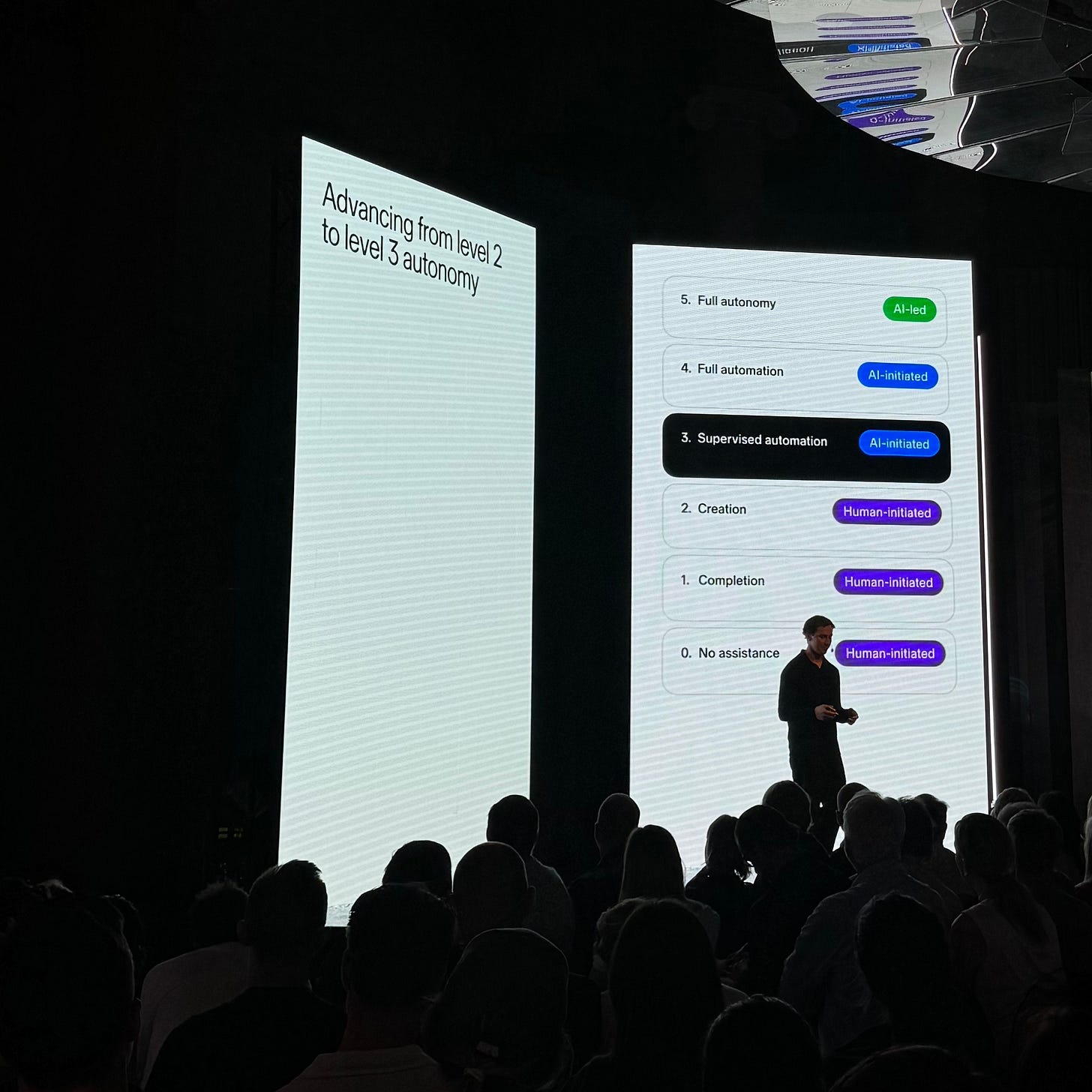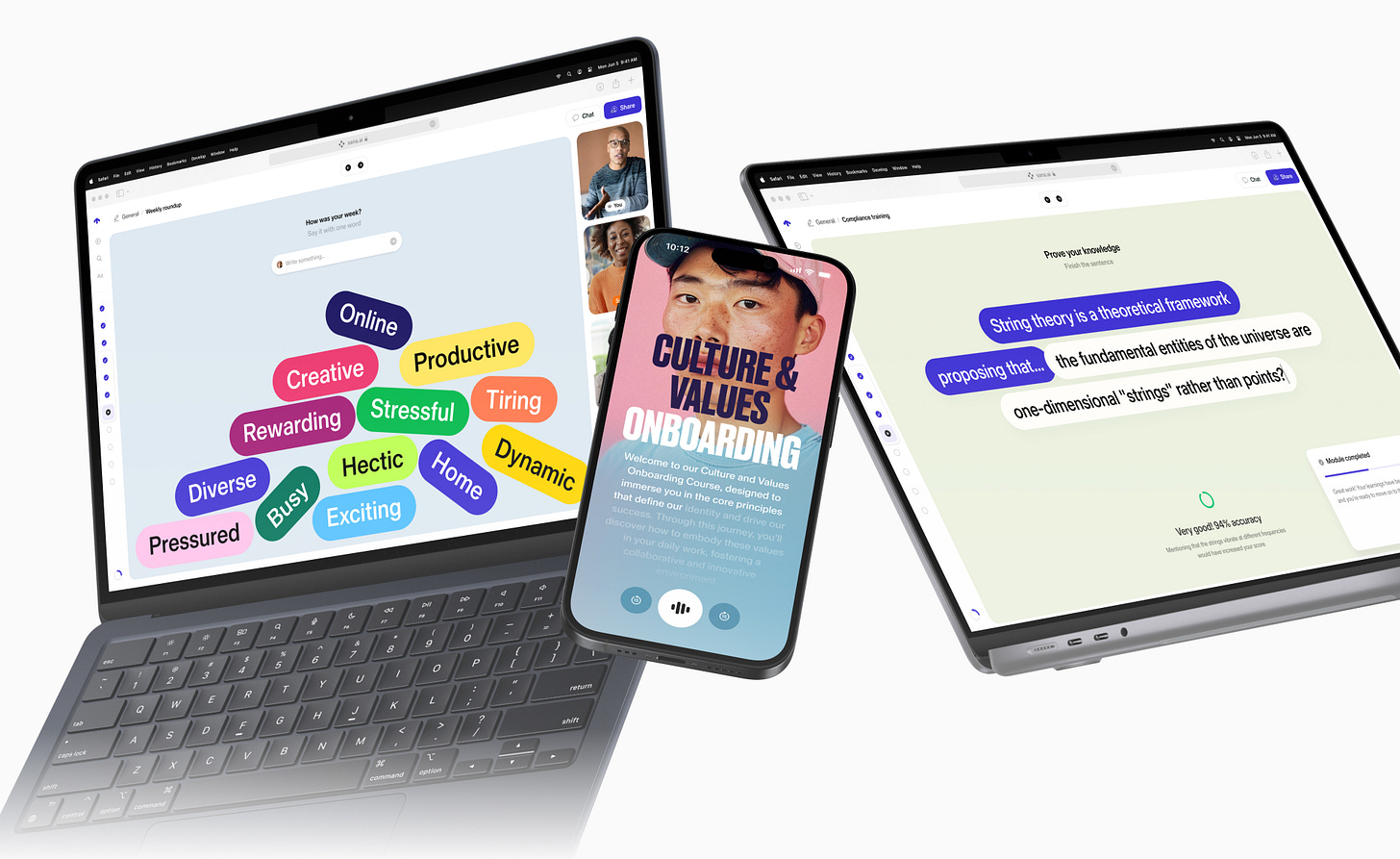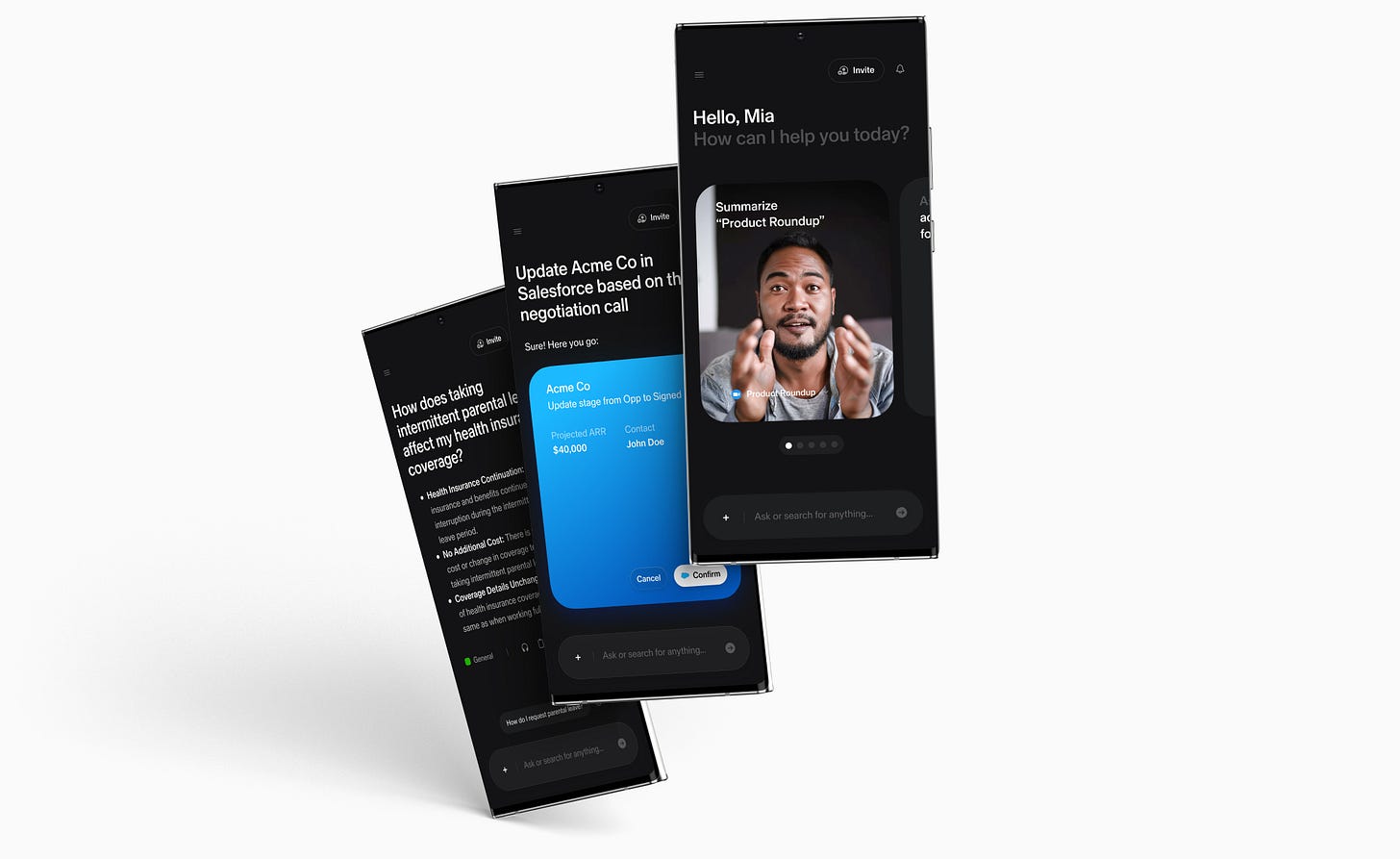How Sana is pioneering AI at the workplace
Understanding Sana’s mission to transform knowledge access.
Welcome to FullStack HR, and an extra welcome to the 41 people who have signed up since last week.
If you haven’t yet subscribed, join the 7100+ smart, curious HR folks by subscribing here:
Happy Wednesday (!);
It's no secret that FullStack HR has been and probably always will be heavily influenced by Not Boring. Without Not Boring, there would probably not be a FullStack HR. Packy, the writer of Not Boring, has this concept of sponsored deep dives where he writes about a company that he really likes and finds compelling, and the company in turn believes his audience is a great one to reach.
I've been wanting to do this for such a long time but I've also been very selective. Because I couldn't do this with any company, it has to be a company that I can get behind, that I can stand behind and that is indeed doing something truly compelling in our field.
I believe in the company. This is fundamental for Sana and also why I've been putting them on my list over great tech tools, not only once but twice.
The company's story is compelling and fits with the trends we're all most interested in. I don't think this needs more explanation. AI is a hyper trend at the moment, and for me, Sana is one of few companies that lives up to the hype.
This is why I'm so incredibly happy to write FullStack HR's first-ever sponsored deep dive around none other than Sana.
Sana is an AI company on a mission to transform how organizations learn and access knowledge. Their products are trusted by some of the most pioneering companies, and last month they were recognized as one of the world’s top AI startups on the Forbes AI 50 list.
I respect the organization deeply—in terms of mission, values, and products. I’m excited to share my take on their journey with you.
Let’s start from the beginning.
Solving the world’s greatest meta-problem
Sana was founded in Sweden back in 2016 by Joel Hellermark, the then 19-year old who had foregone university to pursue his entrepreneurial dream.
Joel is no stranger to the worlds of computer science and entrepreneurship. He taught himself to code at 13 years old and founded his first venture, a video recommendation product, at 16.
People took notice. Joel was appointed an AI specialist in Sweden and an Obama Leader before gracing the Forbes 30-under-30 list in 2021 for his work on applying AI to learning.
Which brings me to Sana. And to meta problems.
Meta problems are a concept from American architect and polymath Buckminster Fuller, one of Joel’s intellectual heroes. According to Fuller, meta-problems are problems that, once solved, allow you to “solve everything else.” So the story goes, Fuller and Einstein, took a walk one day and concluded the greatest meta-problem out there is learning and the dissemination of knowledge.
“Every time we’ve changed access to knowledge, everything else changed for the better,” Joel said in his recent keynote at this year’s Sana AI Summit.
Already in 2016 (way before we all talked ChatGPT) Joel believed that AI would be the greatest enabler to unlocking knowledge. (He had been taking Stanford online computer science courses from machine learning pioneer and Coursera co-founder Andrew Ng for a few years prior.)
It was with that insight that Joel founded Sana.
Transforming workplace learning with AI
Sana’s breakthrough into workplace learning came via an unconventional route. In response to the covid-19 pandemic in 2020, the young company turned all its resources and attention to upskilling nurses.
Through a partnership with NYC’s Mount Sinai and Stockholm’s Karolinska hospitals, Sana developed a personalized learning platform and curriculum that enabled hospitals around the world to upskill nurses on COVID-19 critical care practices faster than through traditional learning methods.
The pro-bono initiative (named Project Florence after Florence Nightingale) supported over 100,000 nurses worldwide.
It put Sana on the map.
By the end of 2020, Sana had raised a $18m Series A. Last May, it reached $62m in Series B funding.
I’ll admit: the first time I met with Sana, I thought they were building another LMS. But their vision was always much bolder than that. In a recent podcast interview with Josh Bersin, Joel explained that the LMS category found them rather than the other way around.
“We want to make sure we deliver on the core LMS features well. But we also don't want to get stuck in that category because, ultimately, it’s about learning. And I always thought it was such a messy ecosystem. Companies would bring in an LMS, then an LXP, then an authoring tool. They would stitch these together and then maybe add enterprise search and a knowledge management tool on top of that and so on. What we aim to do is solve this in an end-to-end way, with AI as the core enabler.”
This philosophy connects back to Joel’s obsession with meta problems. By being more interested in the problem rather than the category, Sana has been able to leapfrog many established LMS/workplace learning vendors. As many have been forced to get on the gen AI train in the past 18 months, Sana was lightyears ahead. A longstanding partnership with OpenAI let them explore AI-assisted learning and content creation as far back as 2019! By last winter, they’d already brought generative AI to analytics—enabling admins to ask questions on learning performance in natural language and get AI-generated dashboards. (Since last month, that’s been powered by GPT-4o.)
It doesn’t stop there. Today, Sana released its 2024 Summer Release, an bi-annual review outlining core learning platform features shipped in the past 6 months and the product team’s vision for what’s to come.
Subtitled “Renaissance Edition”, the Release calls for a complete reimagining of learning platforms in an era of multimodal, conversational LLMs—teasing upcoming features like omnipresent AI tutoring, dynamically-generated personalized learning programs, and much more.
Go check it out!
Building your company’s second brain
The learning platform is only one half of Sana’s product offering. Last year, it announced a workplace knowledge assistant called Sana AI. Before I tell you all about it, let me explain one thing first.
The second brain.
I came across this concept a couple of years ago. The second brain is a metaphor for creating an external system that helps you store, organize, and retrieve all the information and knowledge you encounter daily.
Imagine your brain is great at processing and creating ideas but not as good at storing all the details and data you come across. A "second brain" comes into play here, acting like an external hard drive or a digital library where you keep all this information.
The key is that it's organized in a way that makes it easy for you to find and use the information when you need it.
The idea behind the "second brain" is to free up your mental space from trying to remember every little detail and instead focus on creativity, problem-solving, and learning.
By offloading the task of memory to this external system, you can more effectively manage the vast amount of information you encounter and enhance your productivity and learning capabilities.
Why do I bring up this concept? Because, from my point of view, it’s exactly what Sana’s second product, Sana AI, is doing. Except not merely for individuals, but for entire organizations.
Sana AI is a universal knowledge assistant that lets you chat, search, and interact with all of your company's knowledge from one place. It syncs up with your Slack, Google Drive, Zoom, email and any company apps or software to automate away repetitive tasks while simultaneously serving up information from any of these disparate locations, whenever you need it.
This is not just a place to dump all your files and forget about them. It's more like having a super-smart person on your team who not only remembers everything you've ever told them but also knows exactly when to remind you of that crucial piece of information you need, right when you need it.
It's this smart system that sorts, sifts, and serves up knowledge tailored to each person in the organization.
But it's not just about feeding you information. Sana AI grows with the organization, getting smarter as you feed it more info, making your collective brainpower something extraordinary. The tool even transcribes, summarizes, indexes, retrieves, and analyzes your meetings as if they were any other knowledge asset—making them searchable and part of your knowledge base.
And the best part?
You can now try it yourself. Since last month, Sana AI has been available for free alongside an Enterprise tier.
Imagine having a system that not only holds all the know-how your team has ever accumulated but also connects the dots in ways we might not see on our own. It's like having a backstage pass to the hidden patterns and insights within our own organization, sparking innovations and solutions we might not have stumbled upon otherwise.
Sana AI is like the genius glue holding all our brains together, making sure we're not just a smart group of people working in the same space but a unified brain that's greater than the sum of its parts.
I’ve got to say, I had high hopes trying out Sana AI for the first time. But I’ve been blown away.
It’s rare to find products that genuinely change how we approach workplace learning and knowledge, but that’s exactly what Sana’s two products are doing.
Here's to simpler, smarter ways of working and learning together.






I loved reading this especially on the second brain, I hadn't hear that. You may like our product Shareback.com because we are building the office suite for the AI era :)